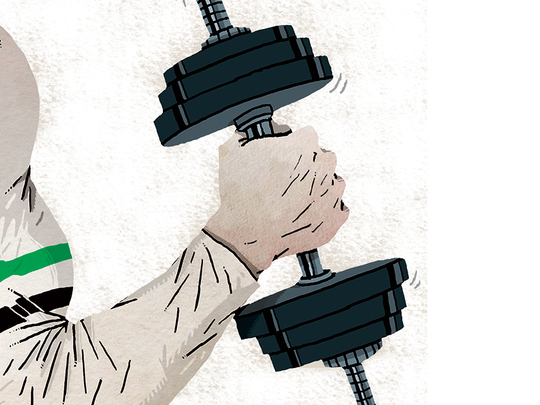
If you are looking for an introduction, there is none this time.
Straight on to the facts by answering this question: How should the UAE’s economy look like in 2050?
Fiscal policies
The UAE should focus on reducing unneeded expenses and deviating from oil revenues by increasing revenues from other sources. The below explains how that could be achieved.
Taxes – increasing revenues
* Taxes and other fees are estimated to now account for 35.4 per cent of revenues (CIA Fact Book), with taxes being 0.4 per cent (World Bank). Taxes should make at least 30 per cent of the UAE’s revenues by 2050.
* VAT (value added tax) should be introduced at somewhere between 3 per cent and 5 per cent, and then maintained at that level to not curb consumption or undercut tourism when VAT proceeds are not refunded. The only exception here would be taxes on alcoholic drinks, tobacco, as well as foods and drinks deemed unhealthy.
* Corporate taxes, regardless of the percentage, wouldn’t make much of a difference once additional countries sign the Avoidance of Double Taxation Agreement.
* There should be no income tax.
* There should be a gasoline tax. Though it would be better to adopt a mechanism that generally stabilises gasoline prices - minimally subsidised when too high and taxed when too low. A gasoline tax would signal the economy’s official take-off from being an oil exporter. Therefore, the subsidy-tax mechanism should equate gasoline pump price with countries that are net importers of oil.
* A carbon emission tax should be levied on industries.
* A remittance tax with percentages tailored in accordance to each income bracket. The tax can be levied on exchange houses that could choose to pass it on to customers or not.
Subsidies: Electricity and water – reducing expenses
• There should be no water and electricity subsidies by 2050. Dubai has a tariff calculator, which shows, presumably, that only low residential and commercial consumptions of electricity - 0-2,000 and 2,001-4,000 - are subsidised, with tariff rates going up as consumption increases.
Water is not subsidised
* Houses should be encouraged to install solar panels, not only to manage their consumption efficiently, but to also sell their excess energy back to the grid. Monthly payment will be the net of their consumption and production.
Pension fund – reducing expenses
* There should be a cut-off date for pension payout – life expectancy minus retirement age.
* Contribution percentages paid by employees should be increased.
* Voluntary schemes should be introduced and carefully supervised.
* Gradual inclusion of non-UAE nationals working in the public sector into state pension fund should be considered – Singapore is an example. This would encourage people to retire in the UAE.
This needs to be done after a thorough analysis and understanding of the UAE’s labour economics, taking into consideration long-term prospects of the jobs market and the level of Emiratisation that the UAE wants to achieve in the private sector.
Sovereign wealth funds – increasing revenues
• Part of net profits from sovereign wealth funds could be used in UAE’s budget calculations, with the remainder being re-invested into the funds. The model should be constructed in a way that could sustain the funds in a time where excess oil revenues are not being deposited into the funds.
An ideal scenario would be to do without withdrawing from the funds and to keep growing them.
Monetary policies - UAE dirham’s peg
• By 2050, the UAE’s dirham should not be pegged to the dollar as oil will represent 0 per cent of the UAE’s economy. Instead, the UAE should peg its currency to currencies of its top 10 trade partners other than GCC and Arab countries, with the condition that those currencies are in the IMF’s basket of reserve currencies.
The basket includes the dollar, euro, Japanese yen, pound sterling, and Chinese renminbi. The UAE’s top 10 trade partners include: China, the US, Germany, Japan, the UK, and Belgium. A formula could be worked out based on trade volume, trade balance, public and private debt, correlations between currencies, analysis of the currency’s performance, as well as the exposure that the UAE’s central bank is willing to accept and work with.
* Unwinding the dirham-dollar peg would reduce incurred costs of supporting the UAE’s dirham and would provide the central bank with a higher level of freedom to set its own interest rates, inflation targets, and dirham exchange rate.
GDP breakdown, by sector of origin
The 2013 composition of the GDP is 0.6 per cent for agriculture, 61.1 per cent for industry, and 38.2 per cent for services. For 2050, it should have:
Agriculture (0 per cent of economy)
The UAE gets almost all of its water by seawater distillation. So unless vertical farming is going to be adopted and only produce what can be produced and sold at a high value, spending money here would take from other sectors’ resources.
Services (75 per cent of the economy)
* Tourism should at least replace the 30 per cent of the economy that oil is responsible for. Tourism in Dubai is estimated to make 30 per cent of its economy. Therefore, tourism should be expanded to different emirates with a specific theme attached to each one of them.
This will diversify and increase each emirate’s revenues and improve the UAE’s national brand as per the ‘Nation Brands’ study done by Brand Finance.
• In addition to that, retiree tourism needs to be nurtured and grown to attract pensioners who should find it easy to resettle in the UAE. The importance of such an industry would keep increasing as demographics in developed economies keep tilting towards aging and retiring people.
— The writer is a UAE-based economist. You can follow him on Twitter at @aj_alshaali.












